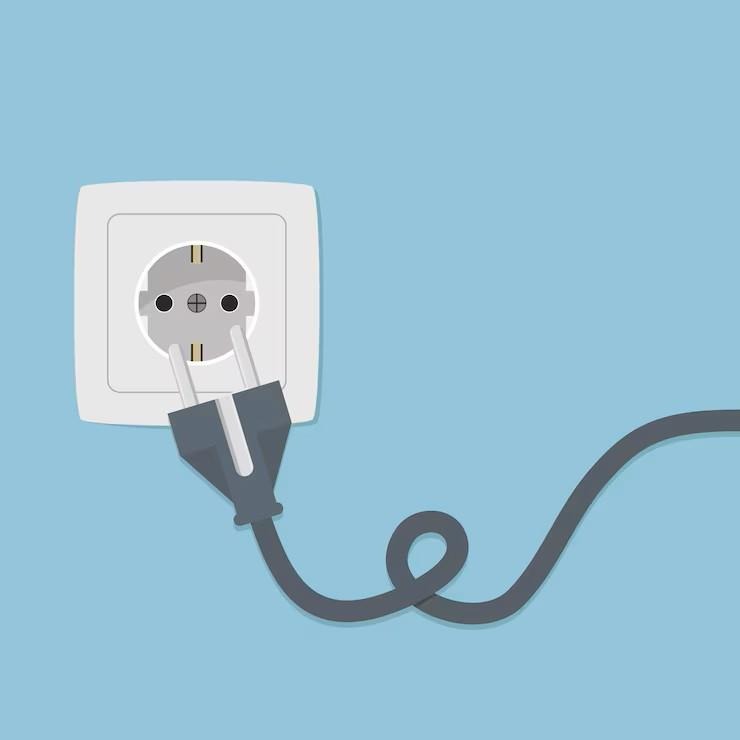A grounded outlet is an essential component of your home’s electrical system, ensuring safety by directing excess electricity safely into the ground. If your outlets are old or malfunctioning, they can pose significant risks, including electric shocks and fire hazards.
Recognizing the signs that indicate it’s time to replace an electrical ground outlet can help you maintain a safe and functional home. As for the EMF related to electricity, you can use a home harmonizer to protect your place from EMF coming from your home’s electrical system.
Here are the key warning signs that you need to replace your grounded outlets.
1. The Outlet Feels Hot to the Touch
One of the most obvious signs of an issue with your grounded outlet is excessive heat. While outlets may get slightly warm due to regular use, they should never feel hot.
Possible Causes
- Loose or damaged wiring inside the outlet
- Overloaded circuit or excessive power draw
- Faulty internal components
What to Do
If you notice an outlet is consistently hot, stop using it immediately and contact a licensed electrician to inspect and replace it if necessary.
2. Frequent Tripping of Circuit Breakers
A grounded outlet should not cause your circuit breaker to trip frequently. If you experience repeated trips when plugging in appliances, it could indicate a deeper issue with the outlet itself.
Possible Causes
- Short circuits within the outlet
- Ground faults or wiring issues
- Overloaded circuits
What to Do
If an outlet is consistently causing the breaker to trip, replacing it may be necessary to prevent electrical hazards.
3. Sparks or Burning Smell from the Outlet
If you see sparks when plugging or unplugging an appliance or notice a burning odor, these are clear signs of a failing electrical ground outlet.
Possible Causes
- Internal wiring damage
- Corroded or loose electrical connections
- Overheating of the outlet
What to Do
Turn off the power to the affected outlet and avoid using it. Call an electrician to assess and replace the outlet before it becomes a fire risk.
4. The Outlet No Longer Holds Plugs Securely
If your plugs keep falling out of the outlet, it’s a sign that the internal contacts are worn out. A grounded outlet should firmly grip any plug inserted into it.
Possible Causes
- Worn-out prong slots
- Internal metal fatigue from years of use
What to Do
If plugs are loose in the outlet, it’s time for a replacement. Loose connections can lead to electrical arcing, which increases the risk of fire.
5. Visible Damage or Discoloration
Cracks, burn marks, or discoloration around your grounded outlet can indicate serious electrical issues.
Possible Causes
- Past electrical surges or overheating
- Aging or defective wiring
- Exposure to moisture
What to Do
Any visible damage should be a clear sign that your outlet needs to be replaced immediately to prevent potential hazards.

6. Two-Prong Outlets Instead of Three-Prong
If your home still has two-prong outlets instead of three-prong electrical ground outlets, they lack the grounding necessary for modern electrical safety standards.
Why This Matters
- Two-prong outlets do not provide proper grounding, increasing the risk of electrical shock and equipment damage.
- Many modern appliances require three-pronged outlets to function safely.
What to Do
Consider upgrading your outdated outlets to three-prong grounded outlets to ensure your home’s electrical system is up to code and safer for modern use.
7. Power Fluctuations or Flickering Lights
If plugging in an appliance causes flickering lights or inconsistent power, the issue could stem from a faulty grounded outlet.
Possible Causes
- Loose wiring connections
- Electrical interference from a failing outlet
- Voltage inconsistencies
What to Do
Have an electrician inspect your outlets to determine if they need replacement to restore stable power distribution.
8. GFCI Outlets That Won’t Reset
Ground Fault Circuit Interrupter (GFCI) outlets, a type of electrical ground outlet, are designed to protect against electrical shocks. If your GFCI outlet won’t reset after tripping, it may be time for a replacement.
Possible Causes
- Internal damage due to surges
- Worn-out or defective GFCI mechanism
What to Do
If pressing the reset button does not restore power, replace the GFCI outlet to ensure continued electrical safety.
Conclusion
Just as EMF solutions protect your home from the harm of electromagnetic radiation generated from electricity, your grounded outlet plays a critical role in protecting your home from electrical hazards. If you notice any of the signs mentioned above, replacing the outlet is the best way to prevent potential dangers such as electrical fires or shocks.
Always consult a licensed electrician for any electrical work to ensure safe and proper installation. Prioritizing your home’s electrical safety will give you peace of mind and ensure the longevity of your appliances and devices.
FAQs
How do I know if an outlet is grounded?
Use a circuit tester or multimeter to check if the outlet has proper grounding by measuring the voltage between terminals.
What does a grounded outlet look like?
A grounded outlet has three holes: two vertical slots and a round hole for the ground connection, usually below.
What is the difference between Grounded and ungrounded outlets?
Grounded outlets have a third hole for safety, providing protection from electrical shocks, while ungrounded outlets lack this feature.

